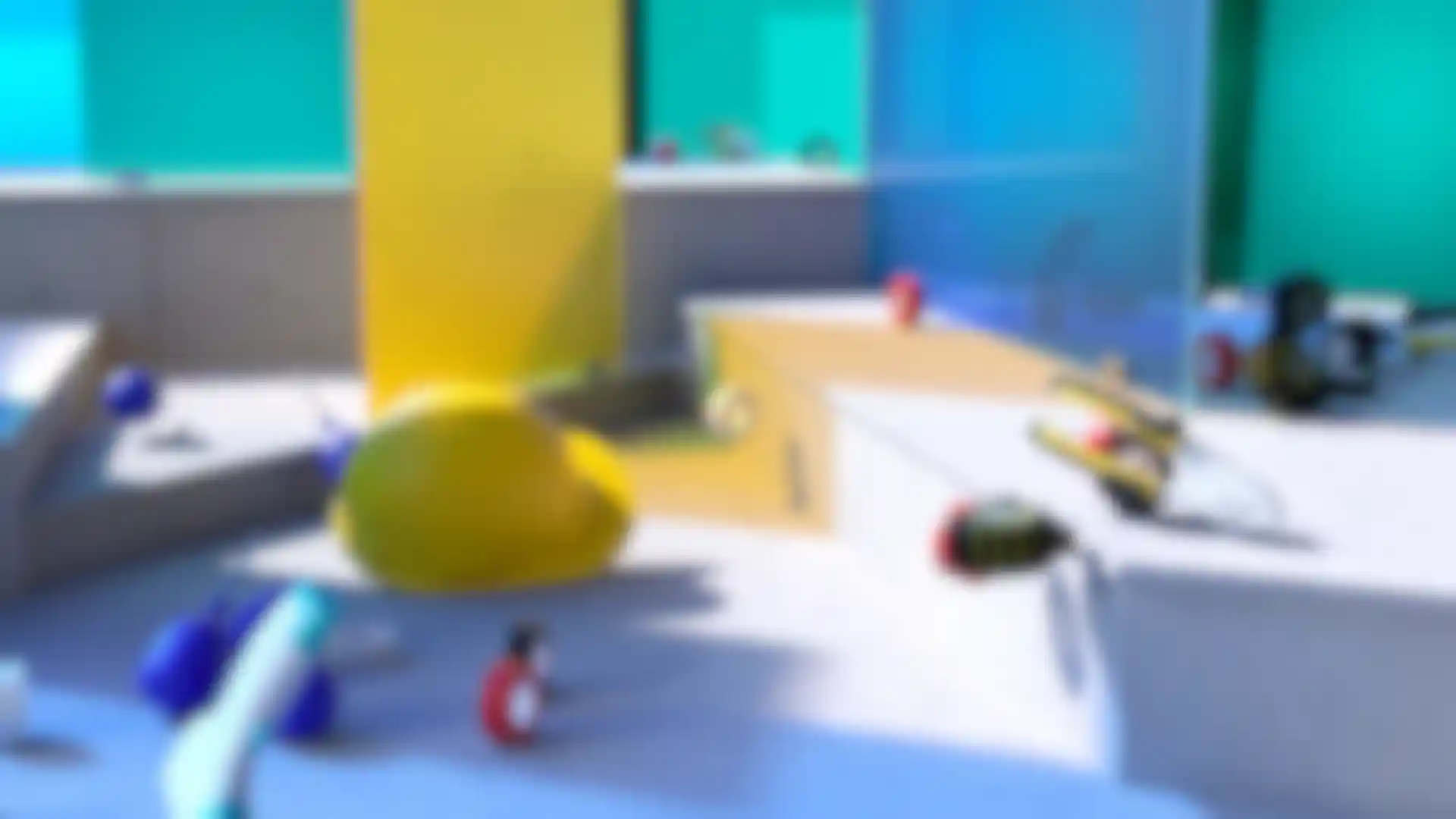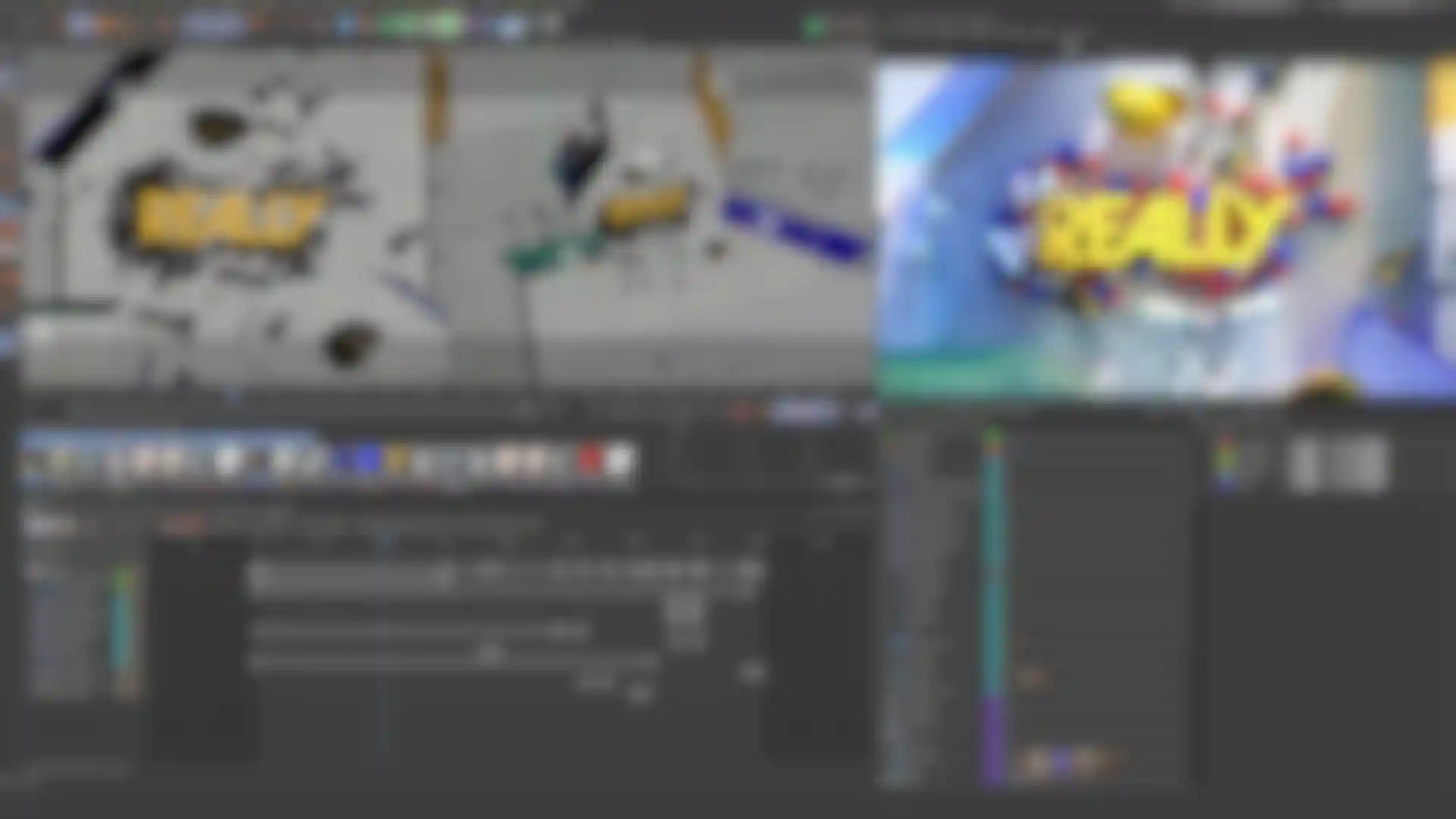
Visualizing the Work of People Who Give Their All Ink and Giants on the 3D-animated idents they created for Really Channel.
Ink and Giants has worked with the London agency Discovery Creative before, but the UK-based studio was still excited to be invited to pitch ideas for new idents for Really Channel. Small studios aren’t often asked to pitch higher-profile projects, but Ink and Giants’ design-driven motion studio is increasingly attracting attention.
Working closely with Discovery Creative, Ink and Giants used Cinema 4D, X-Particles and Octane to create the new idents, which are part of a larger rebrand of Discovery’s lifestyle and entertainment channels.
We talked with the husband-and wife-team who founded Ink and Giants, Dianne Dela Torre and Peter Dobes, as well as Senior Motion Designer David Whatley, who helped out on the project. Read on to learn how they tackled the complex project, which required a concept that celebrated whole-hearted and courageous people without featuring them directly due to COVID-19 restrictions.
Tell us a bit about the pitching process.
Dela Torre: Discovery Creative invited us to pitch ideas for an identity refresh for Really Channel. They thought it would be great to add someone with a design-led approach to the mix of creatives. We presented about five ideas, two of which got us into the finals. We won with the idea to have tools of the trades from the various characters in the shows making their way toward the Really logo, their natural home.
Really Channel is all about celebrating people who are driven to help others in some way, so they have shows about rescuing people and investigating the paranormal. The idea is to focus on people who have courage and a sense of purpose. We needed to have a concept that embraced that spirit.
How did they describe what they wanted?
Dobes: In previous years Really Channel has always had live-action idents with real people in them, but that was not an option this time due to COVID. So, following the brief, which asked that the idents be uplifting and warm, we came up with fully CG ideas and won the job.

Whatley: But then we thought, ‘Oh this is going to be a great challenge developing all of these ideas.’ Fortunately, the design process was really fluid. Our job was to find different objects that worked well together visually and represented Really Channel’s programming genres: paranormal, DIY, emergency and rescue and medical.
How did you come up with the different objects?
Dobes: When we were picking the objects, we looked at them individually but also as a group. That made us realize that in order to work visually together, they needed to have a common shape or silhouette. For example, Ropework has long, flexible items and Tumble has objects that are round.
Still, choosing items with similar shapes doesn’t always guarantee that they’ll look good as a group. Familiar objects for the Instruments ident, which was related to medical fields, were mostly long and pointy and that group didn’t feel or look right to us. We needed objects that would tell the story without seeming too grim. So we removed the pointy items and replaced them with objects with rounder edges, like thermometers that you hold up to your head. The scene looked more more cohesive and interesting immediately, but it was really a design challenge to figure out which objects looked good together.

Whatley: Another interesting thing was that we didn’t want the objects to just seem like they were falling in physical space. They needed to have some character of their own, kind of a playful interaction with each other. Just like the characters on the show, the objects were on an unstoppable journey toward the logo because they were driven to get there. The client really liked that idea.
Describe the different idents.
Dela Torre: Tools of the trade was kind of the overarching theme. Since we could not use real people, we wanted the tools to be the heroes. Each ident features multiple genres of programming, for example the Instruments ident was kind of a combination between the DIY and medical genres. Glow includes a lot of light sources from different genres, including the paranormal and bargain hunting. The ident was inspired by the idea that people on the show always have a mission, and they’re often searching for something.


Tumble shows a lot of tiny things in a macro environment on fabric. That ident covers DIY and bargain hunting, and we had all kinds of objects in mind for that. We had upcycling in mind, so we chose antiques, gears from watches and decorative door handles, all small things you might normally ignore but they are very crucial. To make it feel different from the others, maybe more uplifting, we had all of the tiny things tumble onto soft fabric.

Ropework is all about determination, and the primary genre was emergency rescue No matter how hard something is, the rescuers will push through it. So we chose things like hazard tape, fire hoses and ropes and chains.
Choosing the right set of hero objects in each ident was crucial and so was the environment that the objects were in. We designed the environments to help support the concept for each one. For example, we knew that Ropework, being all about determination, needed to have rough terrain that was naturally difficult for the objects to move through. Instruments is about expertise, so it needed to be clean and well-crafted space. Having a bright environment with lots of glass was the perfect environment for that one.
Tell us a bit about your process.
Dela Torre: It was a challenge to sell a full-CG execution for this when we first pitched the idea because the channel wants to maintain a sense of authenticity and relatability that is better suited to live-action. So even after we won the job, the main client needed reassurance that the idents would feel real. We ended up using a slightly different approach for the project, and we spent a long time developing the ideas, like we normally do in our conception stage. But we had to develop the look and feel of the visuals at the same time, which was quite early in the process.
We pretty much designed and built most of the environments, putting in as much detail as we could to show the final look of the end of the shot for each ident. That was all done during the storyboarding process, so it was quite heavy on pre-production, but it paid off in the end.
Whatley: We storyboarded everything and made an animatic, which was crucial. And doing polished style frames early was a win-win because we nailed the look, and it told us what we needed to do so we could go back and tidy up after the initial build. Cinema was great because it is so fast, and we had to turn this project around really quickly. We only had a couple of days to build the previz and get that over to the client.

There were a lot of dynamic simulations for all of these idents so, in some ways, we had to layer up the simulations because you couldn’t simulate everything happening at once. In some cases, we used proxy shapes to speed up the simulation while keeping it looking accurate enough. We mostly used native dynamics in C4D for the simulations, and Glow was the easiest because the objects were mostly round and straightforward.
For Tumble I mostly used attractors to drive the motion of the objects. The key was giving them personality, but because we were dealing with small items that were light weight, they didn’t tumble naturally enough when pulled by a force. So we used specific proxies that would give us the kind of movement that we wanted while still having a natural feel.
The buttons, for example, were way too thin to roll on their sides, so we altered the shape of its proxy and made it slightly thicken and rounder, helping the buttons to roll properly. The fabric was simulated in X-Particles. I used a collision deformer to create the impression on the fabric, which helped us save time.

What have you been working on lately?
Dobes: Since the Really idents, Ink and Giants have been working on a variety of projects from experiential tradeshow installations to brand films, as well as more channel branding development.
Is there anything else you want to say about this project that we haven’t covered?
Dela Torre: We’re very grateful for Discovery Creative and the Discovery team for picking us to be their creative partners on this. We thoroughly enjoyed the process and are pleased with the outcome. It received quite a lot of love, and a few people, even other clients, have told us that they thought the idents were filmed. That’s a great testament to the power of Cinema 4D and its third-party plugins. It’s helped push the level of what small studios, designers and/or artists in this industry can do.